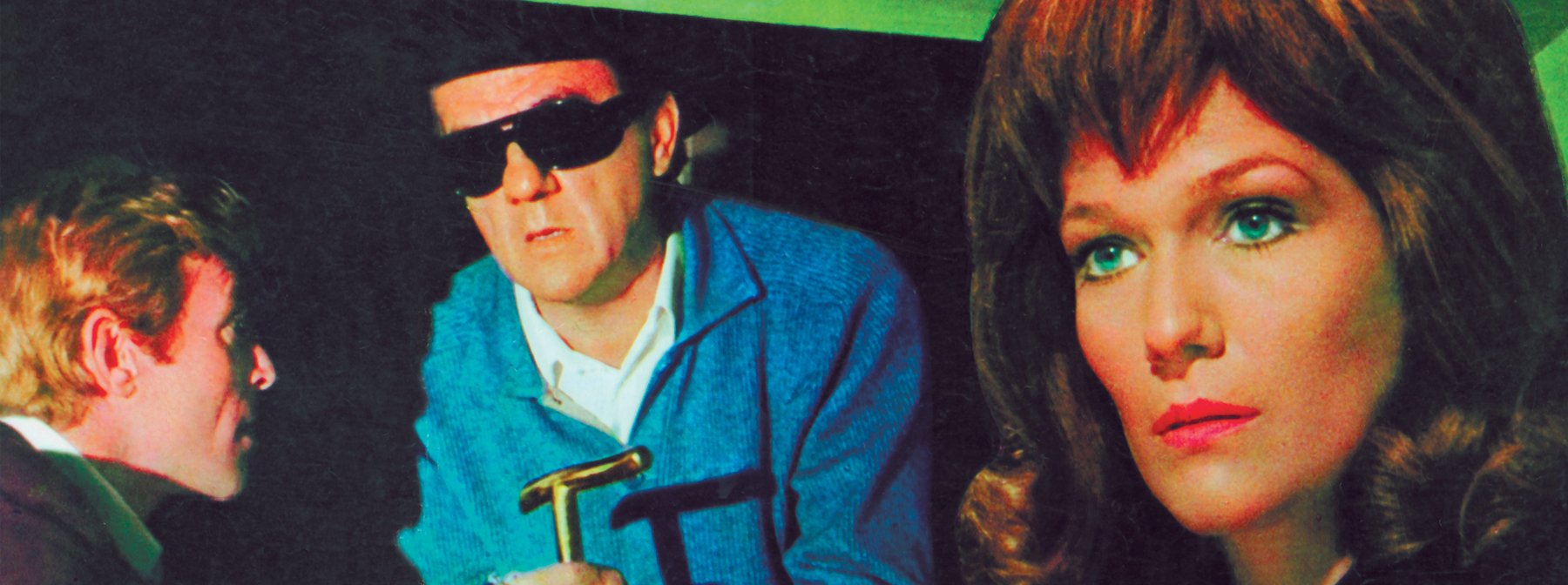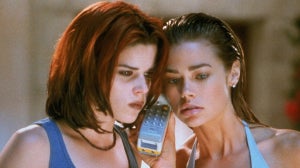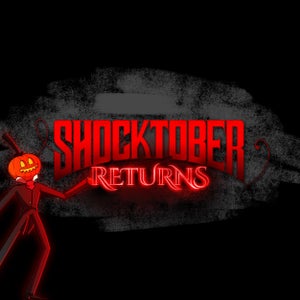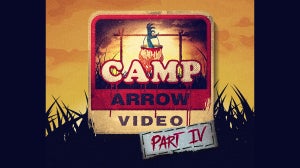
To celebrate the streaming release of giallo-fuelled Crystal Eyes on the Arrow Video Channel, we put our thinking gloves on to compile a list of the greatest giallo moments.
But not just the best kills, that would be too easy, we wanted to compile a whole range of essential scenes we’d need to create our dream (nightmare?) giallo homage.
So, what follows are a series of moments that, if you used a razor’s edge to slice them apart to glue them back together again, would combine to craft the ultimate modern giallo experience.
Brace yourself for murder, mayhem, and at least one rooftop chase.
Blood and Black Lace - Opening
To build the perfect giallo, we’d have to open with an eye-gougingly gorgeous credit sequence.
In terms of influence, there’s plenty to pick from, but we’ll need to pull on a white mask and black fedora to hunt out our favourite example. Mario Bava’s Blood and Black Lace, with its perfect symbiosis of stunning colour and surreal staging, sets the scene for a cinematic experience like no other.
It’s the original, and best, opening giallo sequence, with a creepy tone that’s as beautiful as it is bizarre. No wonder everyone that saw it stumbled out of the cinema wanting to recreate it - not least the director of our first big scene...
The Bird With The Crystal Plumage - First set piece
Dario Argento sat in the cinema watching Mario Bava’s painterly brilliance, so it’s unsurprising that the first major set piece in his debut murder mystery sees an innocent man bear witness to a brutal assault through the window of an art gallery.
The window has the same size and dimension of a movie screen, with the modern art surrounding our first victim feeling like uber-meta-production design.
Argento would eventually step through that cinema screen into a world where he wielded the camera more like a wild weapon, but, even with its relatively simple staging, as an opening slasher statement, they don’t get much better than The Bird With The Crystal Plumage.
If we were creating the quintessential giallo, we’d definitely have to include an early set piece as bold as this.
Tenebrae - Double murder
You can’t make an omelette without breaking some eggs, and you can’t make a giallo without battering enough brutalised bodies to fill a mortuary. So, you’ll forgive us if we go on an unhinged murder spree in this next section of our breakdown - starting with Dario’s (yes, him again - get used to seeing his name) delightful duplex of despair; the double-kill thrills of Tenebrae’s most awe-inspiring sequence.
A rising camera turns intruder as it penetrates the apartment of our victims, exploring every inch of the murder scene before it captures not just one death, but two - combining black gloves, a silver razor, white clothes, and red blood in a glorious giallo rainbow. Next-level staging and camera-work combine to create a sequence with unforgettable impact. Our perfect giallo would contain a shot-for-shot (and slash-for-slash) recreation of this moment.
Cat O’Nine Tails - Train pain
Of course, no true giallo would be complete without some sort of public death, so our next victim would have to meet their maker in the open air.
Dario Argento’s casual crushing of Cat O’Nine Tails train station victim brings a new meaning to the term ‘trainspotter,’ when Dr Calabresi is turned into blood spots on the grill of an incoming engine.
With editing as cutting as the kill, you feel like it’s not just the vehicle that’s against our victim, but the film itself.
Your Vice Is A Locked Room and Only I Have the Key - Novel death
The giallo genre was inspired by yellow-covered pulp fiction, so we need to include some sort of writerly reference into our kill compilation. Luckily, Sergio Martino’s Your Vice contains a scene that probably influenced one of the most important horror books ever written.
A writer shuts himself away, and types pages and pages of the same psychotic phrase. Sound familiar? That’s because Stephen King probably saw Your Vice before writing The Shining, and Kubrick (who described Italian cinema as having ‘a poetic personality’) almost certainly saw it before he made his adaptation.
Not only that, but the sequence revealing Your Vice’s all work and no play phrase (‘Kill her and hide her in the cellar wall’) contains a typically manic combination of frenzied score and POV violence - and you can’t make a giallo without those elements either.
What Have You Done To Solange? - Quick soak
Giallo murderers frequently invade our safest spaces, killing their victims in the places they like to relax the most, whether that’s art studios, living rooms, or - frequently - bathrooms.
Massimo Dallamano’s Solange has one of the most deranged bathroom kills, once again putting us into the perspective of the killer as we move through an entire apartment to disturb a professor’s mistress’ bathtime routine (complete with red towel), to drown her in real-time, kicking and gurgling as she goes.
It’s a murder that feels so realistic and vivid, you have to check your own alibi to make sure you weren’t complicit in it.
Dressed To Kill - Going down
Our sole American influence comes from Brian De Palma’s Dressed To Kill, itself a tribute to the genre, but it’s such a pure example, we can’t ignore it. But then you try ignoring Michael Caine in drag advancing towards you with an open razor, and see how far you get. Of all the non-Italian homages to the genre, this is the standard to beat.
The Fifth Cord - The investigation
‘God I hate cops,’ says Helene Volta (Silvia Monti) in Luigi Bazzoni’s fantastic The Fifth Cord. She might hate them, but most great giallos have to include them, policemen are part of some of the most bizarre twists in the genre.
In this scene, Monti’s describing her interrogation at the local police station, and we’re including it as our most memorable investigation example because... Well, look at it - Volta’s disdain for the constabulary combined with those beautiful blue-lit blinds (lighting that ties the moment to the film’s conclusion)... all we’ll say is, if only every cop show looked like this, maybe Volta wouldn’t hate them so much.
Case Of The Scorpion’s Tale - Rooftop chase
After pursuing a black-clad killer up some twisting stairs that might as well be a metaphor for director Sergio Martino’s plot structure, our next victim finds himself in a rooftop chase.
If he’d been a fan of the genre, he would have expected it - roofs are a very popular hang-out spot for the sort of people who enjoy tugging on black gloves and shoving blades into the people who annoy them.
Case of The Scorpion’s Tale is a particular favourite, if only because the investigation uncovers a rooftop room filled with creepy dolls, because of course it does.
Deep Red - Twist ending
So, we’ve had our murders, the investigation, and even a pulse-pounding chase sequence, but what it really all comes down to is this: the ending. Get it right, and your film will be remembered forever, no matter what comes before it.
All great giallo movies need a jaw-dropping twist that’s as logical as it is impossible (get the balance right, and you’ll have an ending that surprises and satisfies in equal measure) and they don’t get more impossibly impressive than Dario’s Deep Red denouement.
It’s not so much an end sequence as it is the final moments of a magic trick, with a reveal that unveils something you already should have seen earlier in the movie. It’s not just information you should have guessed, it’s a detail in an image you almost certainly missed - to the extent you’ll rewind your first watch to double-check.
That level of control over the camera, composition, and the direction of your audience’s attention is what makes the giallo genre truly great, with the movies that hide the key to their mystery in plain sight the most entertaining of them all.
Deep Red has been described as the ‘the giallo to end all gialli,’ which makes it the perfect way to end ours.








